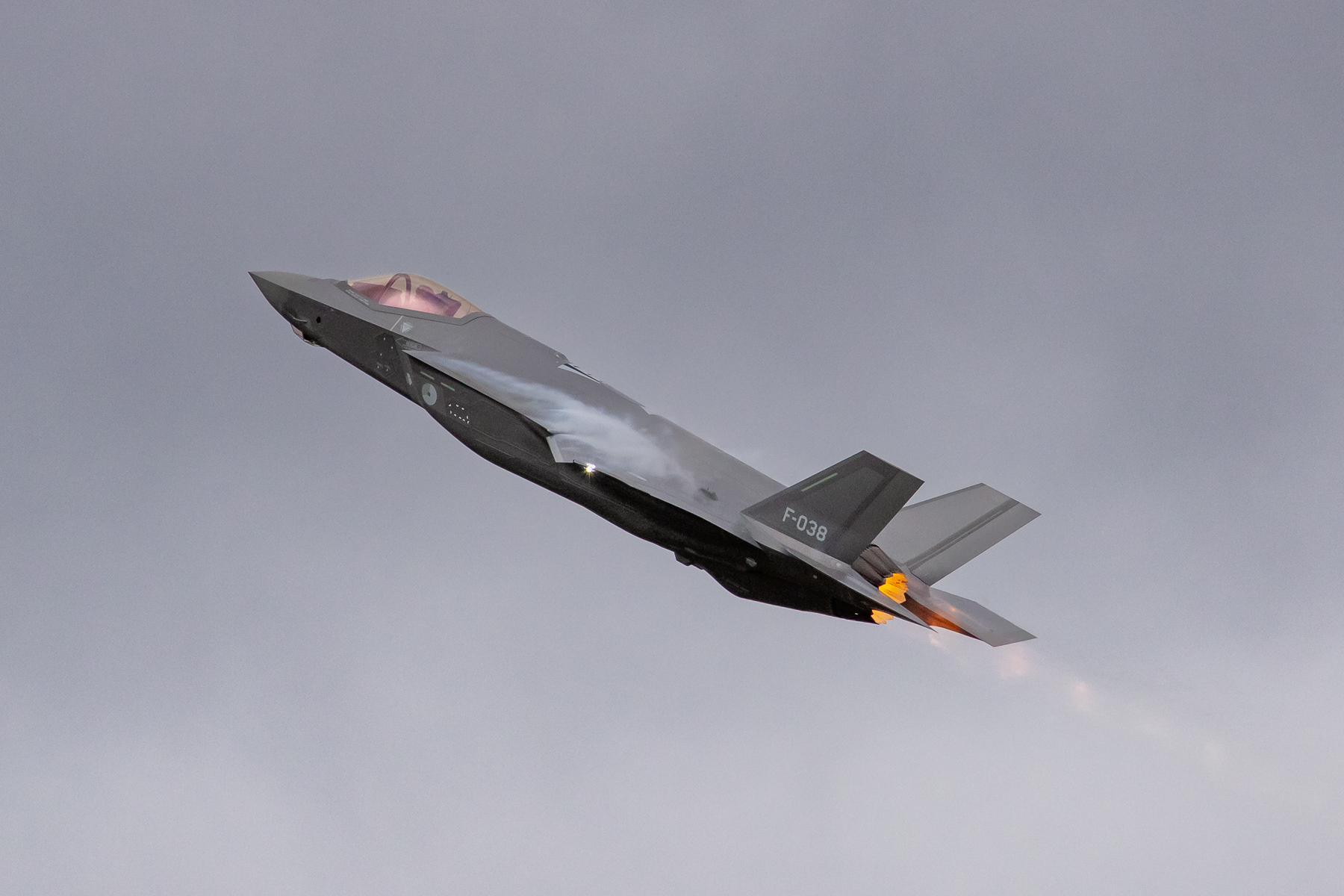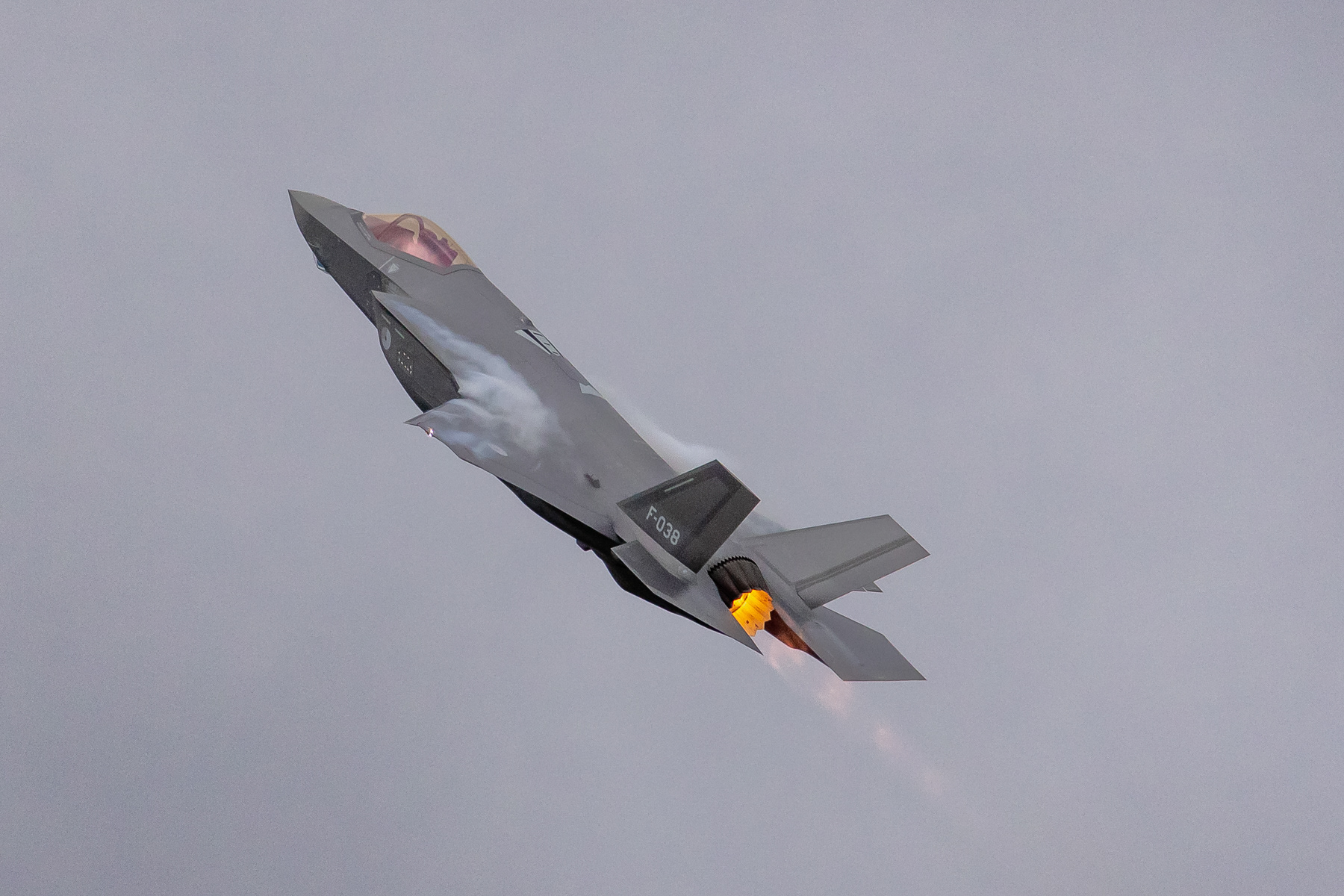The F-16 with tail code J-643 started its service life on 17 March 1986 with 306 Squadron. It was scrapped in May 2019.*
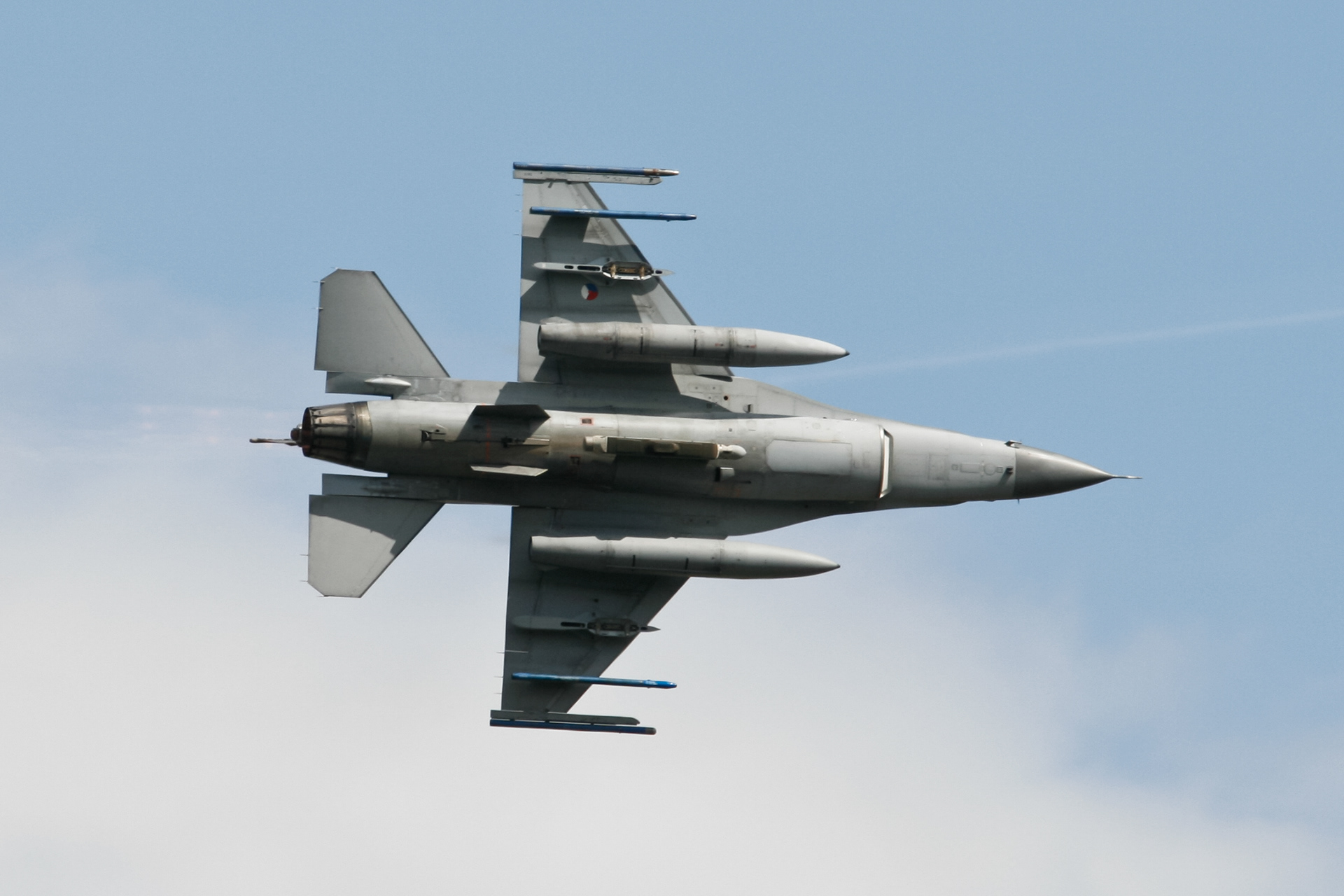
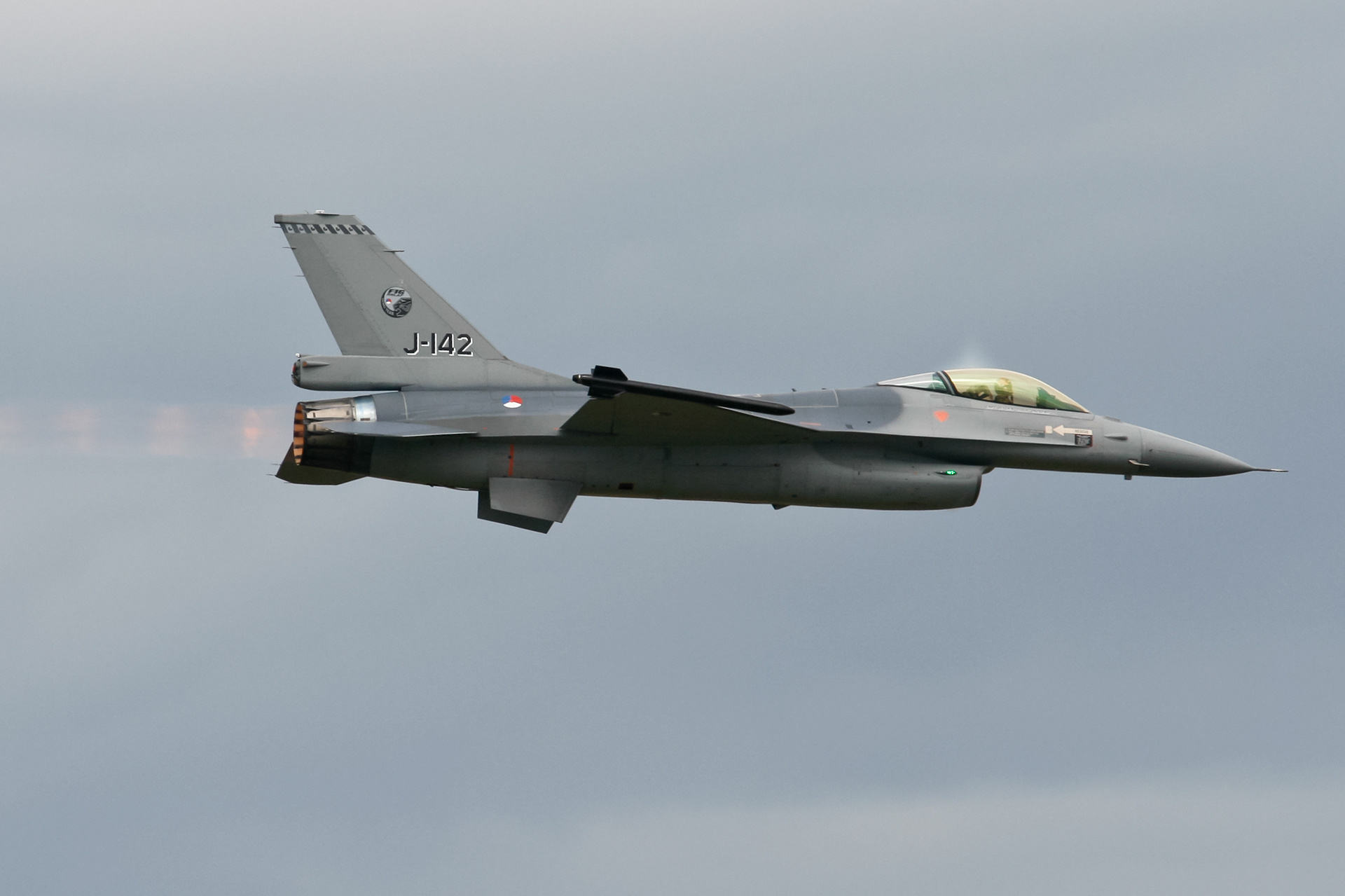
RNLAF F-16A with tail code J-632 started its service life on 02 May 1983. It flew with 306, 311, 312, 313 and 322 Squadron. Since 2023 it is used as a so-called instructional airframe, for training purposes, at Volkel Airbase.*
RNLAF F-16A with tail code J-616 started its service life on 15 May 1982 with 311 Squadron. It will be put on display as a "gate guard" at Volkel Airbase.*
Photo of a mock-up attack during the Military Airshow of Gilze-Rijen Air Base in 2014.
RNLAF F-16A with tail code J-201 started its service life on 02 April 1986 with 315 Squadron. In 2022 it was stored at Volkel Airbase, and this one is reportedly could be among the 24 to be delivered to the Ukrainian Air Force. It has been seen in Romania with the EFTC.*
RNLAF F-16 J-197 got a special tail paint scheme for the final flight, commemorating the 45 years of Royal Netherlands Air Force service of the type, the squadrons (on the rudder) and the combat mission areas )high up on the tail.
The final nine operational F-16s of the Royal Netherlands Air Force before the pilots boarded their planes, photographed on the flightline of Volkel Airbase, 27 September 2024. Note from left to right: J-146, J-512, J-641, J-006, J-515, J-008, J-013, J-197 and J-062. The canopy of J-146 remains closed and the aircraft was towed away after departure of all the other aircraft.
The first three aircraft taxi to the runway, with J-062 leading the specially painted J-197.
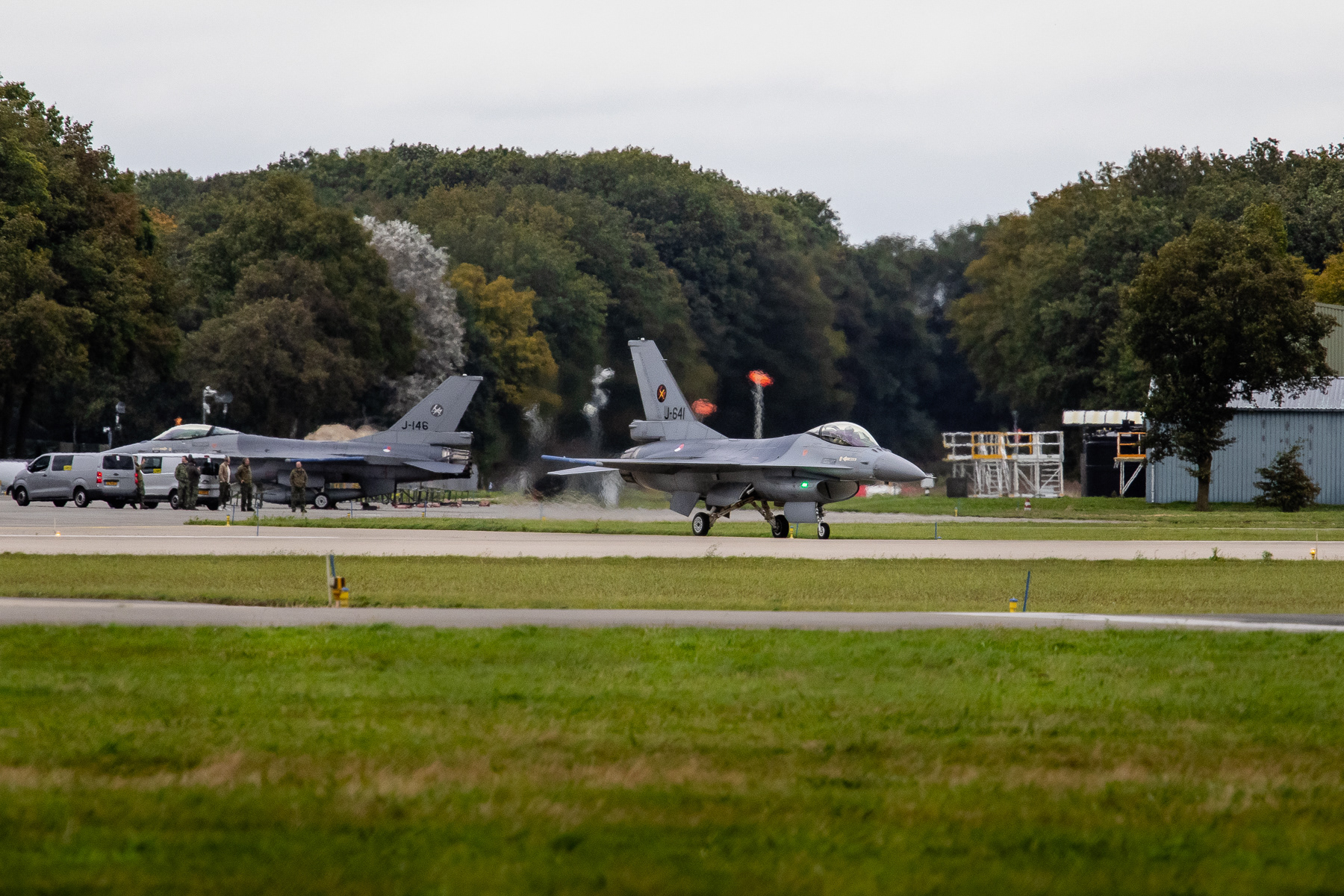
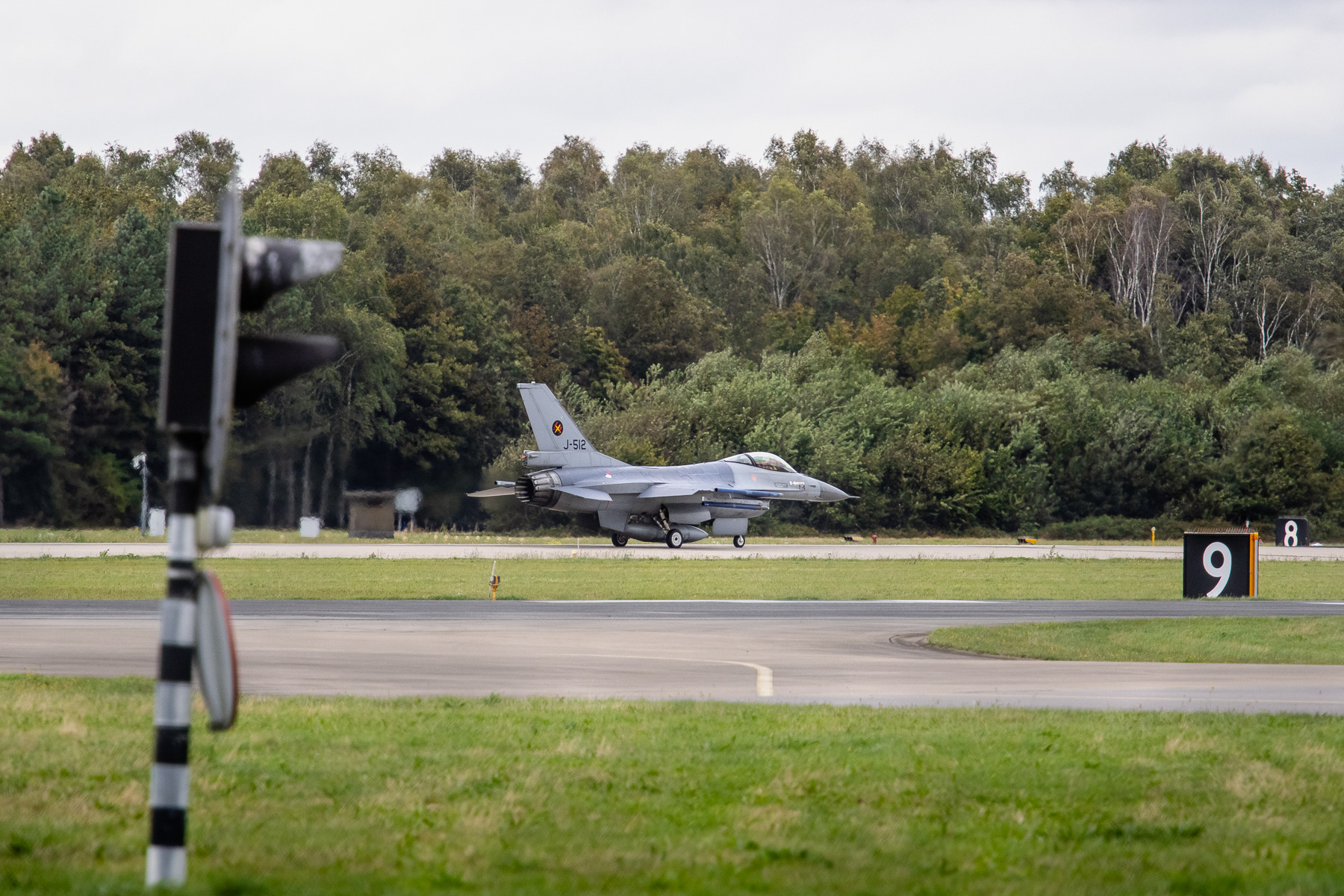
RNLAF F-16AM with tail number J-512 shortly after take-off to the west.
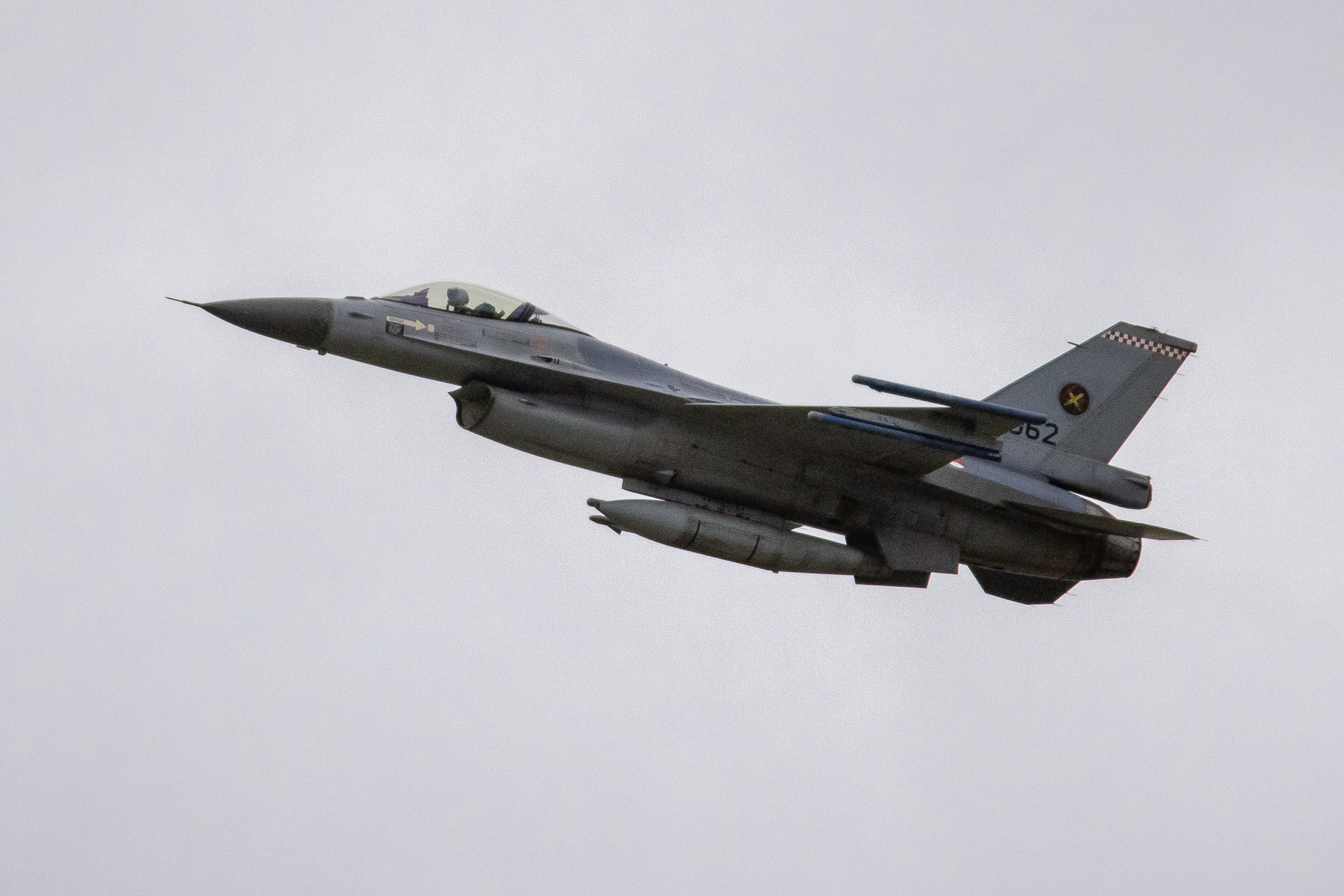
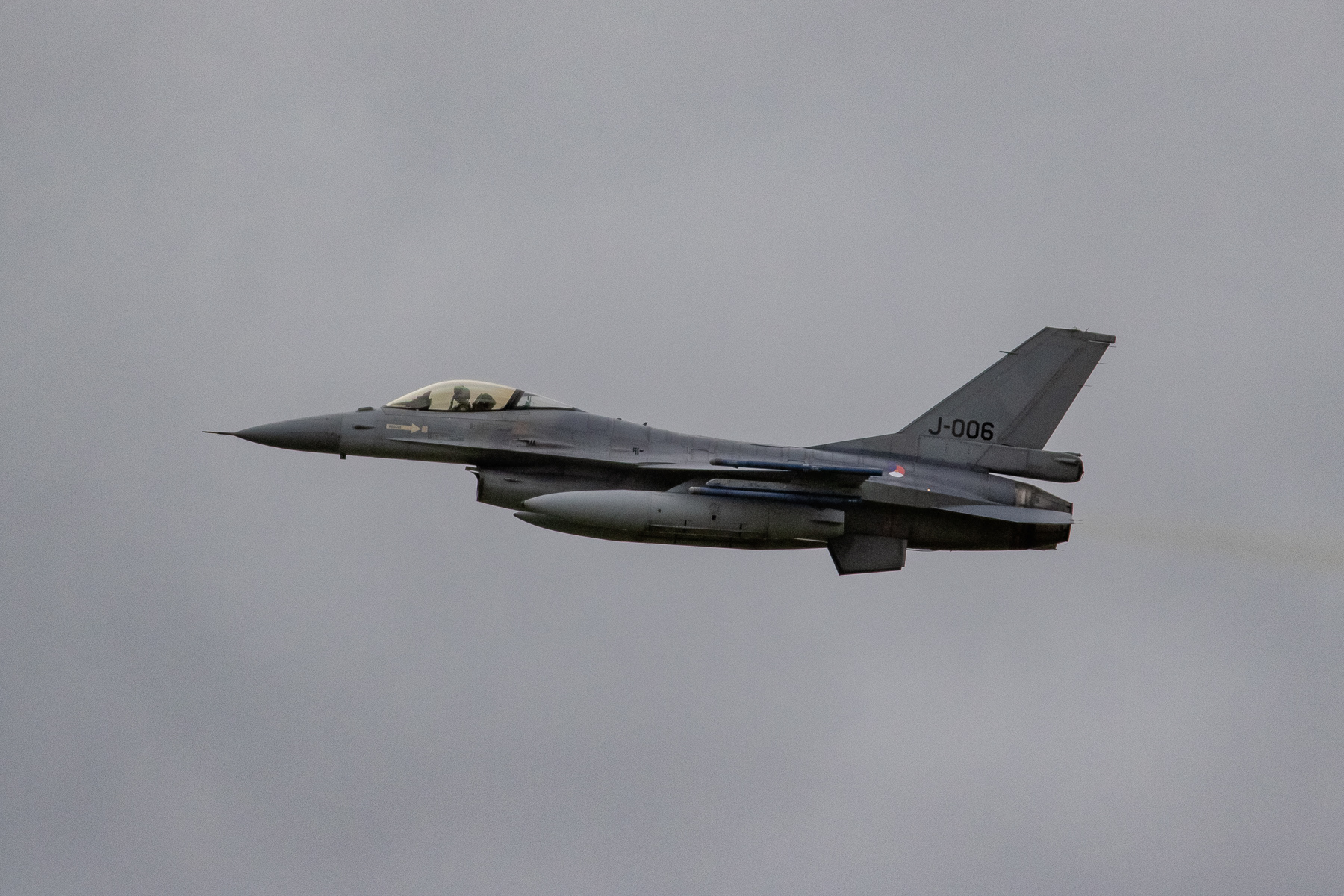
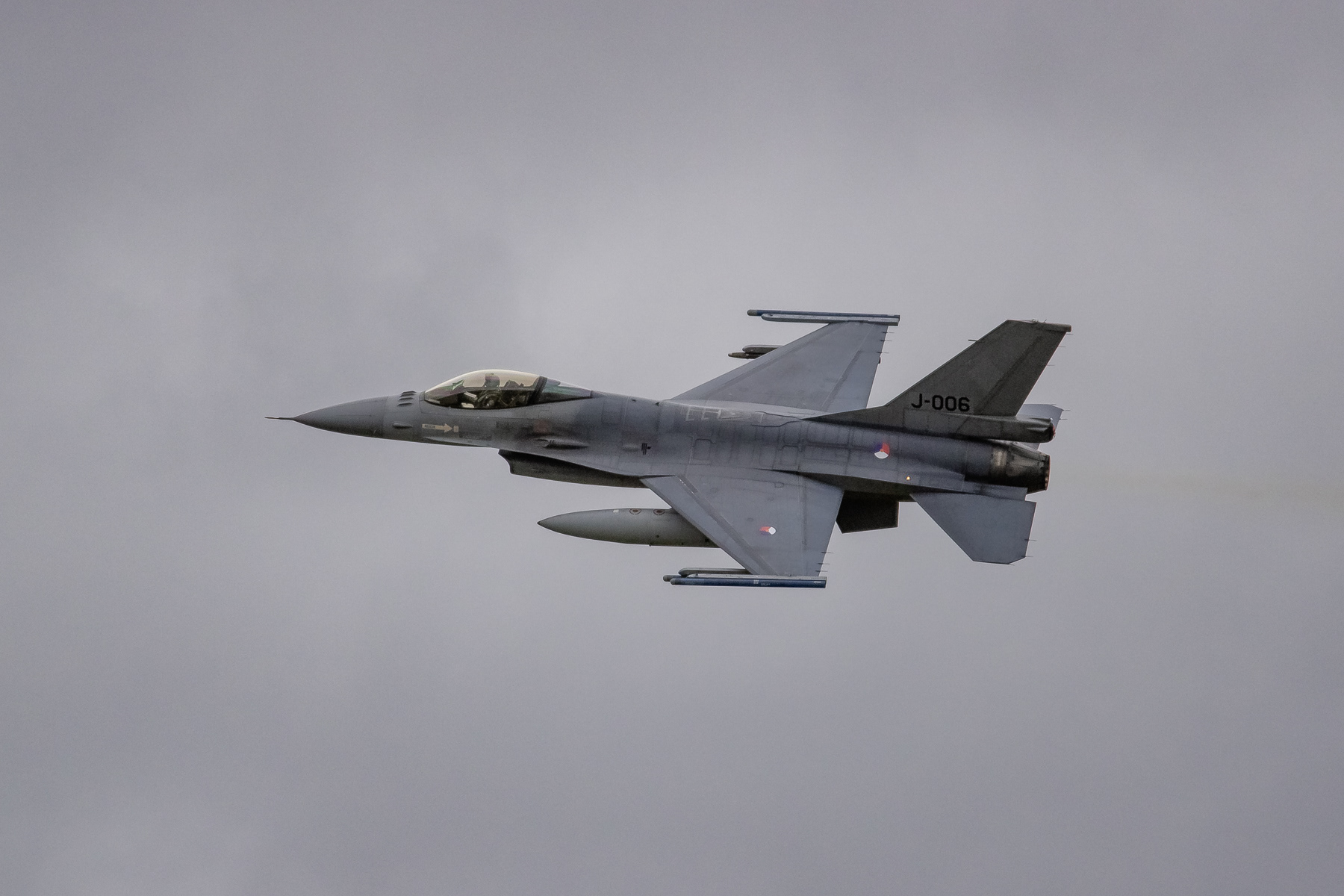
Six of the eight Farewell Falcon aircraft approaching Volkel Airbase from the east.
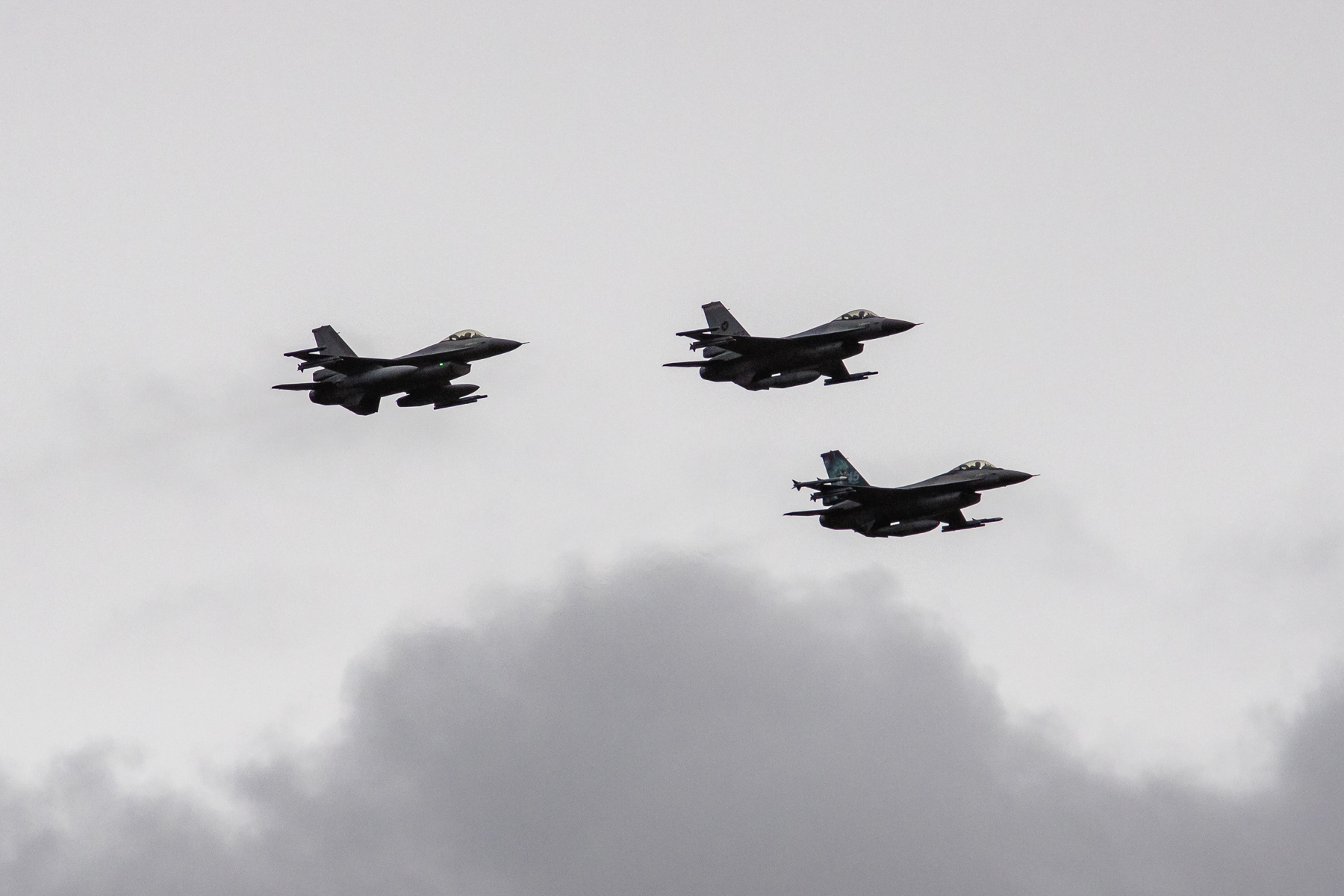
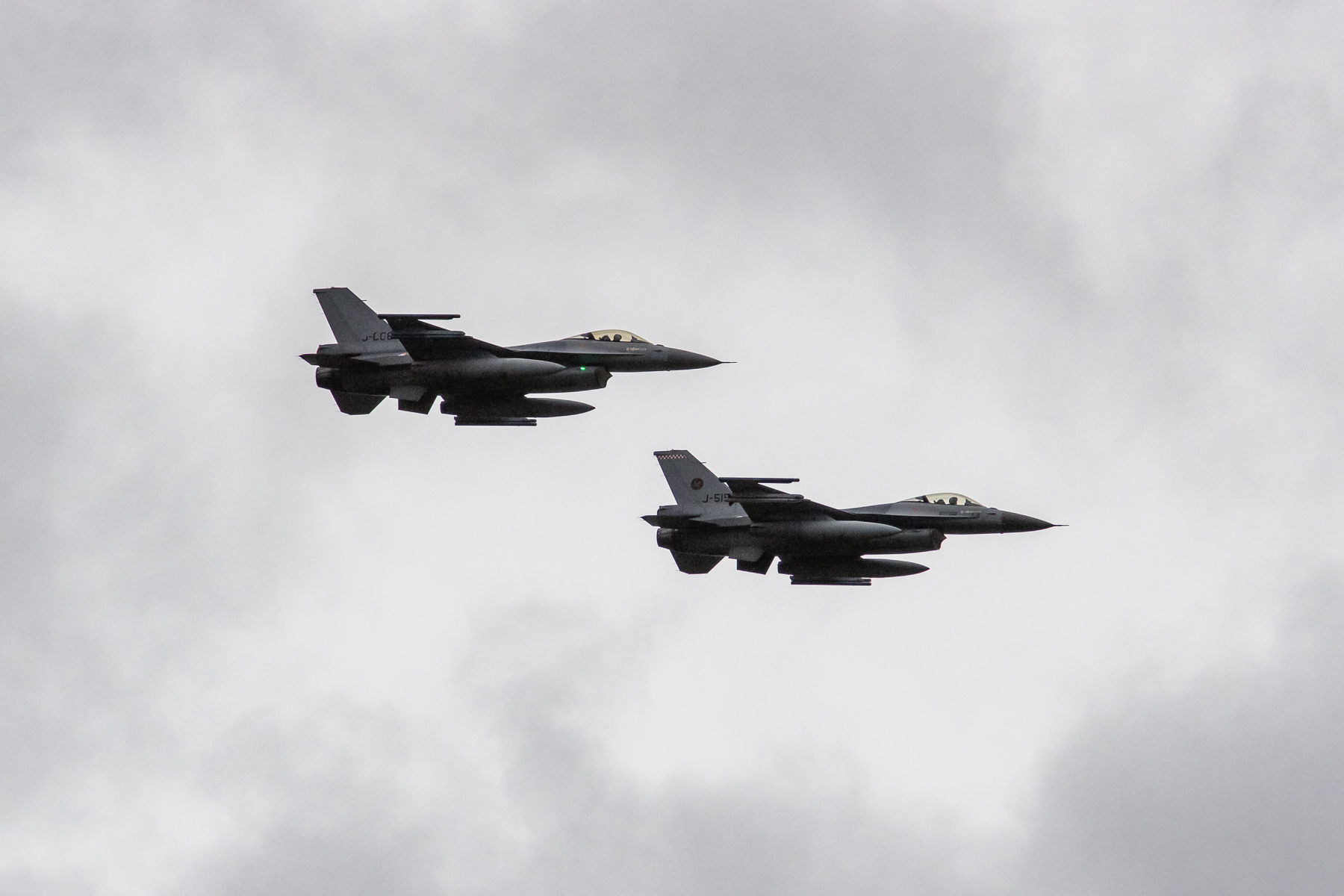
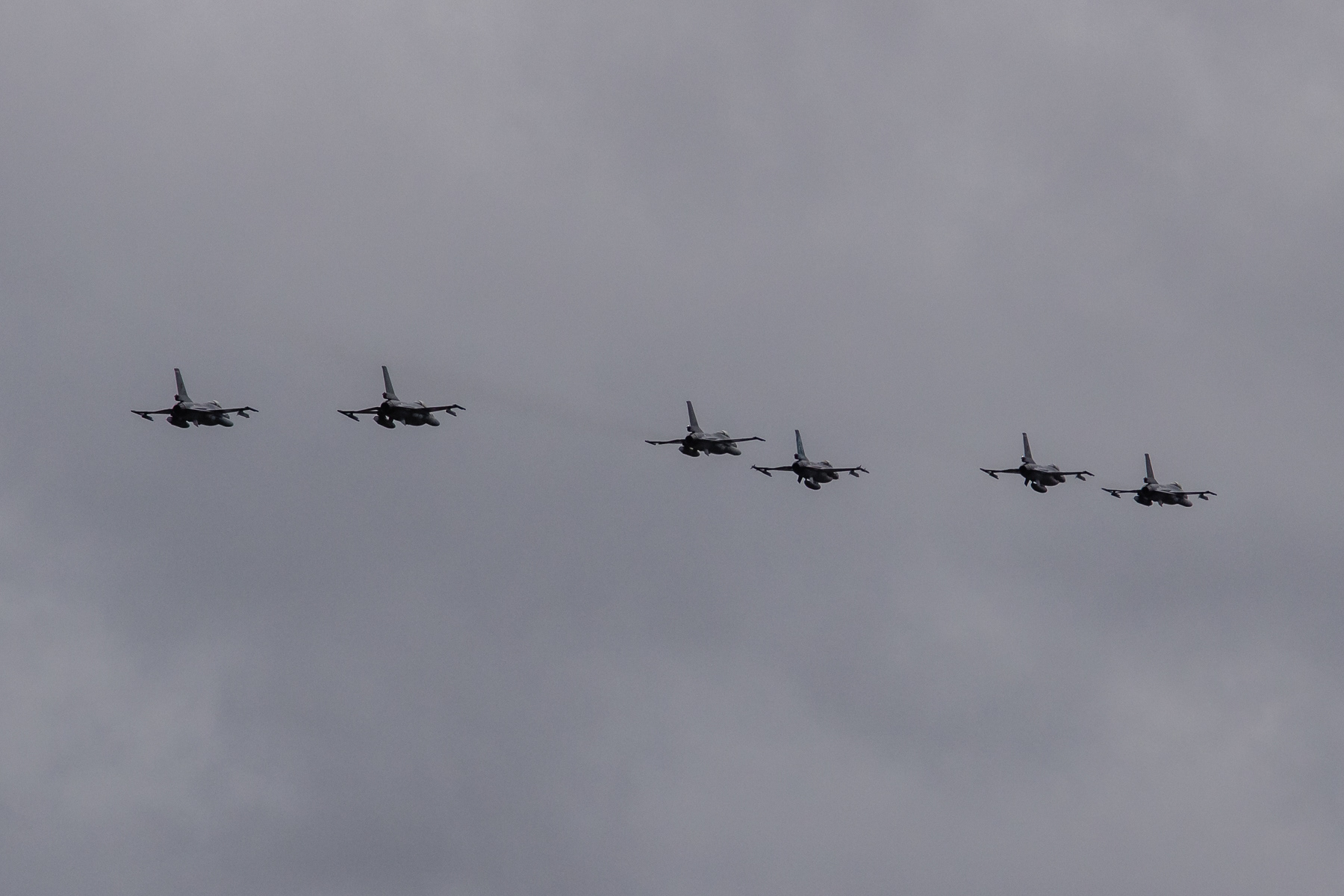
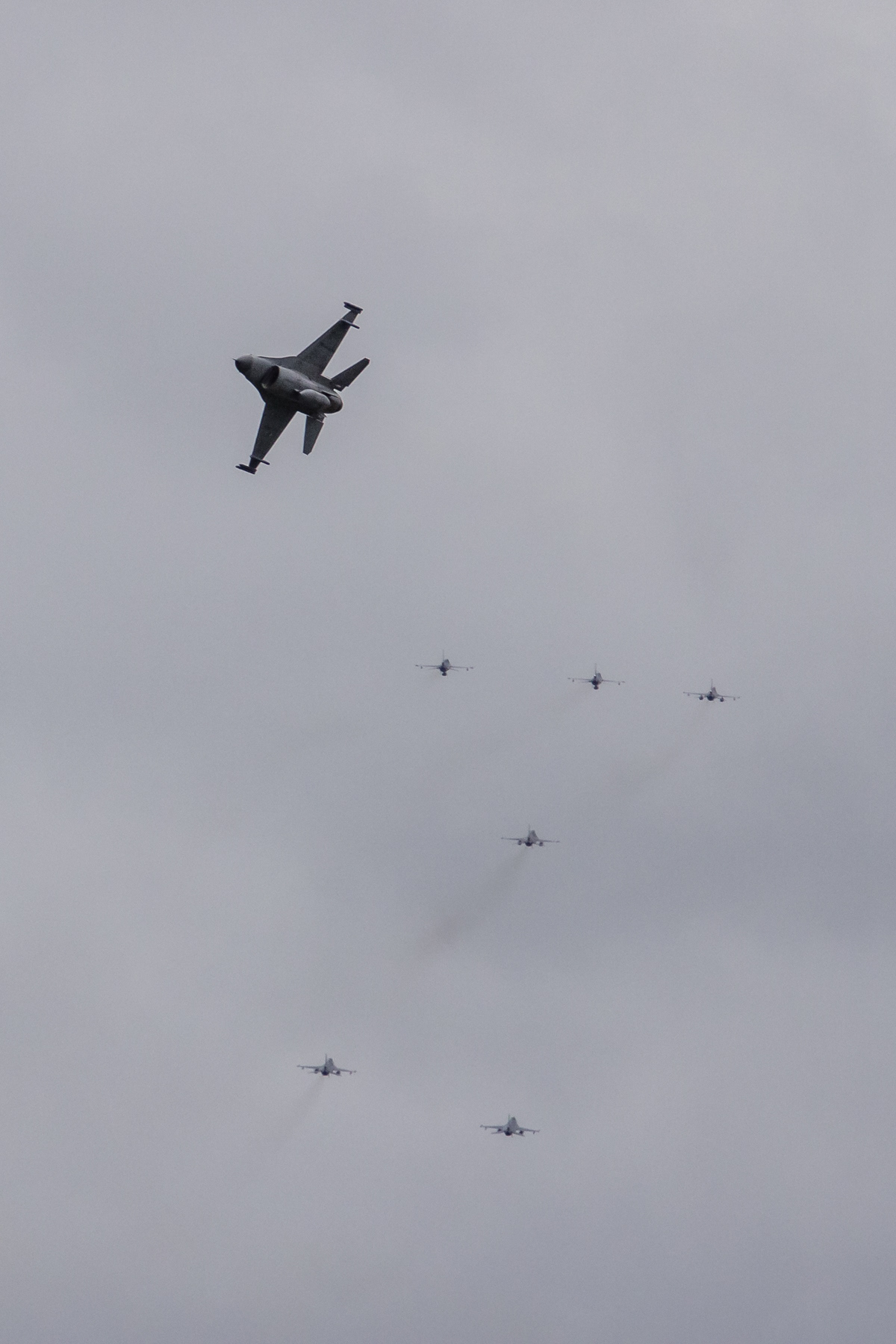
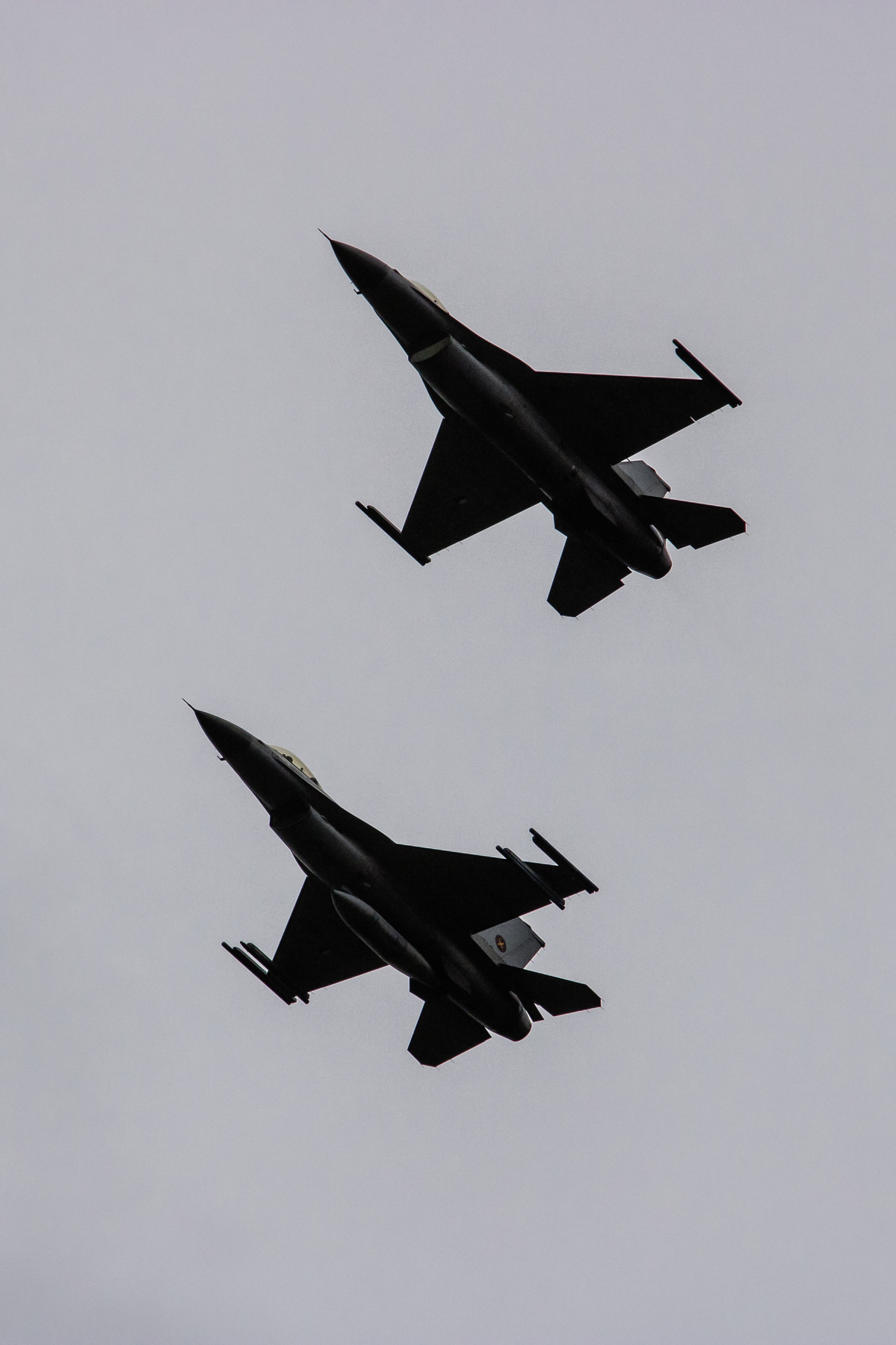
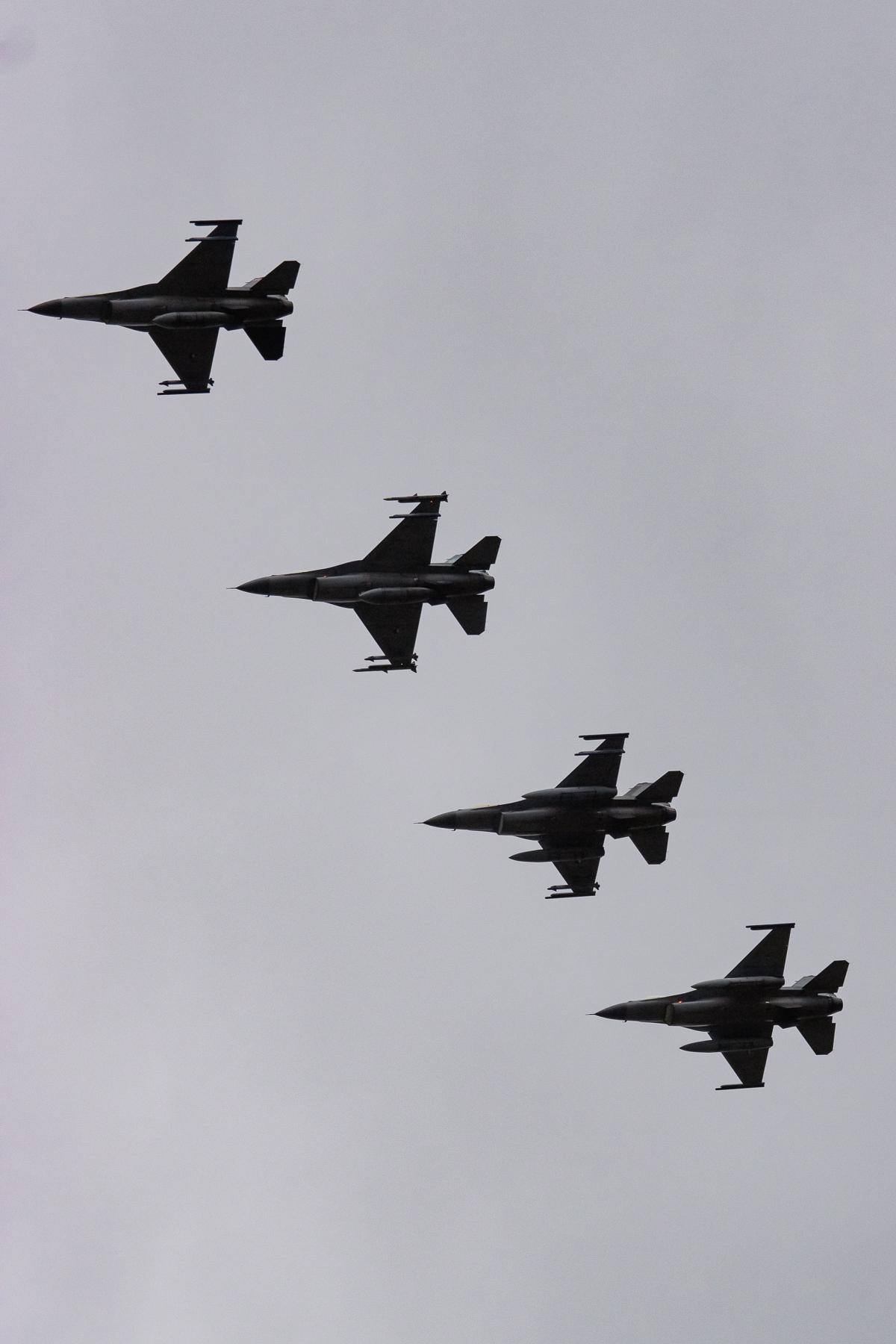
The first of the 4-pack breaks left to fly downwind before turning to final for landing.
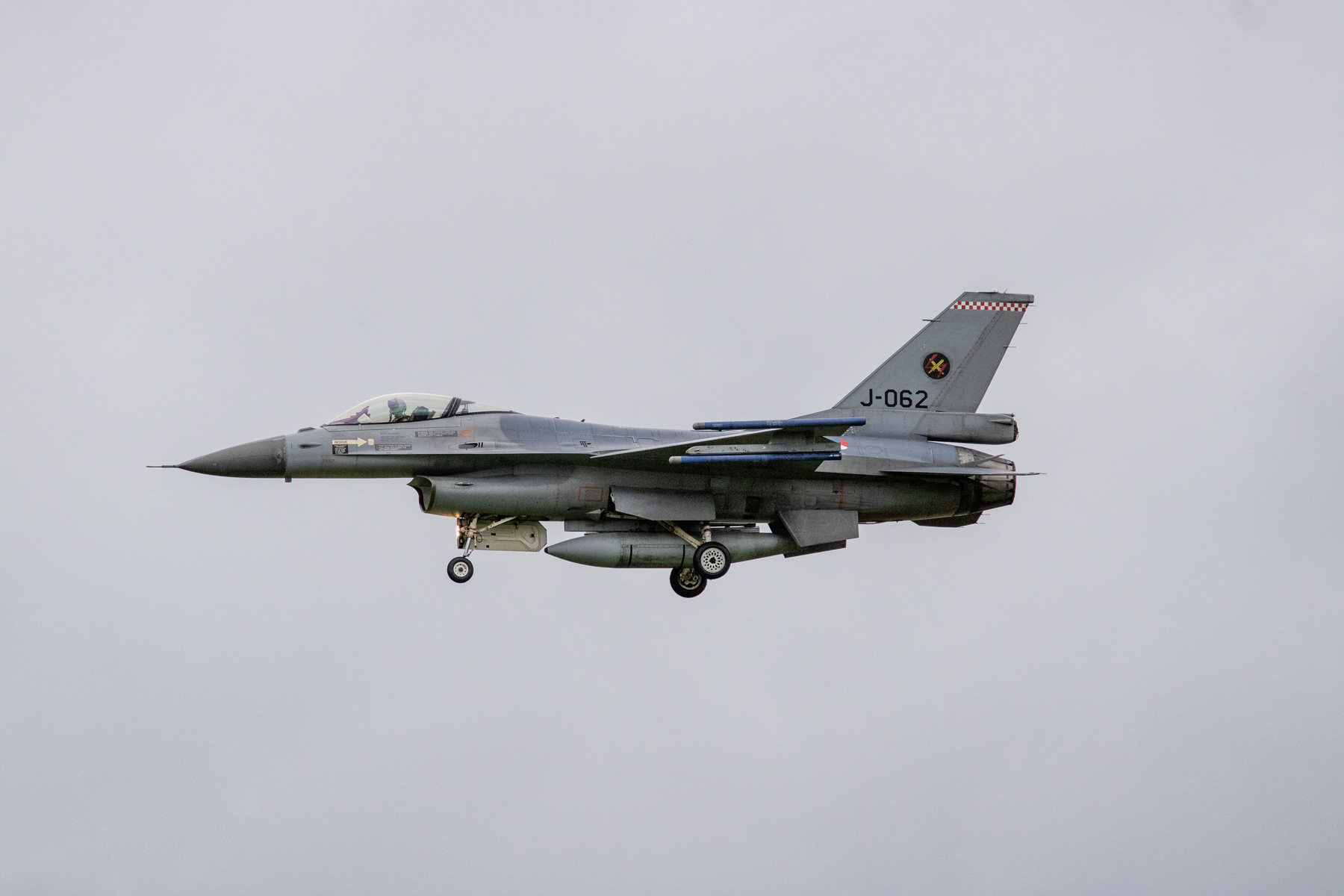
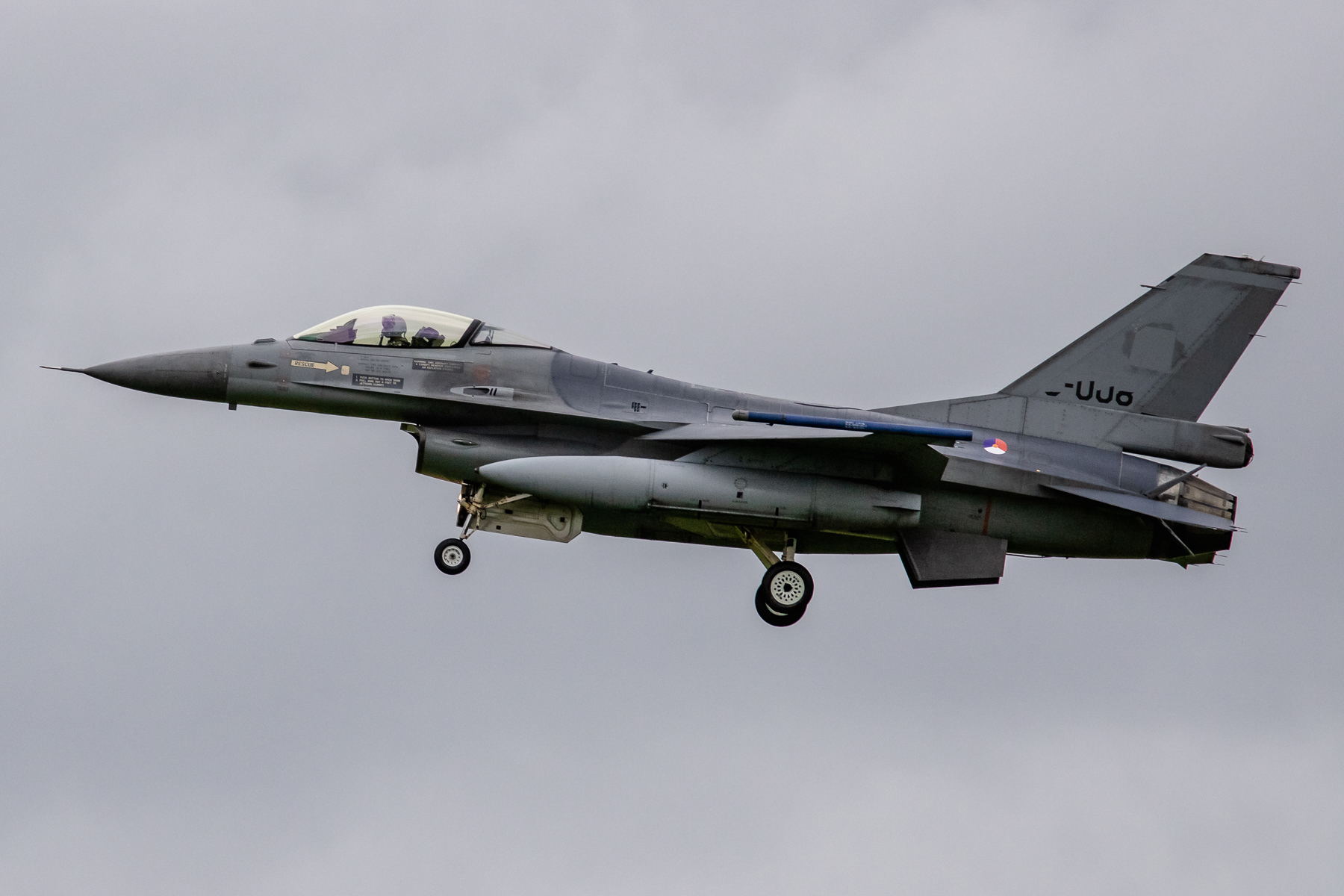
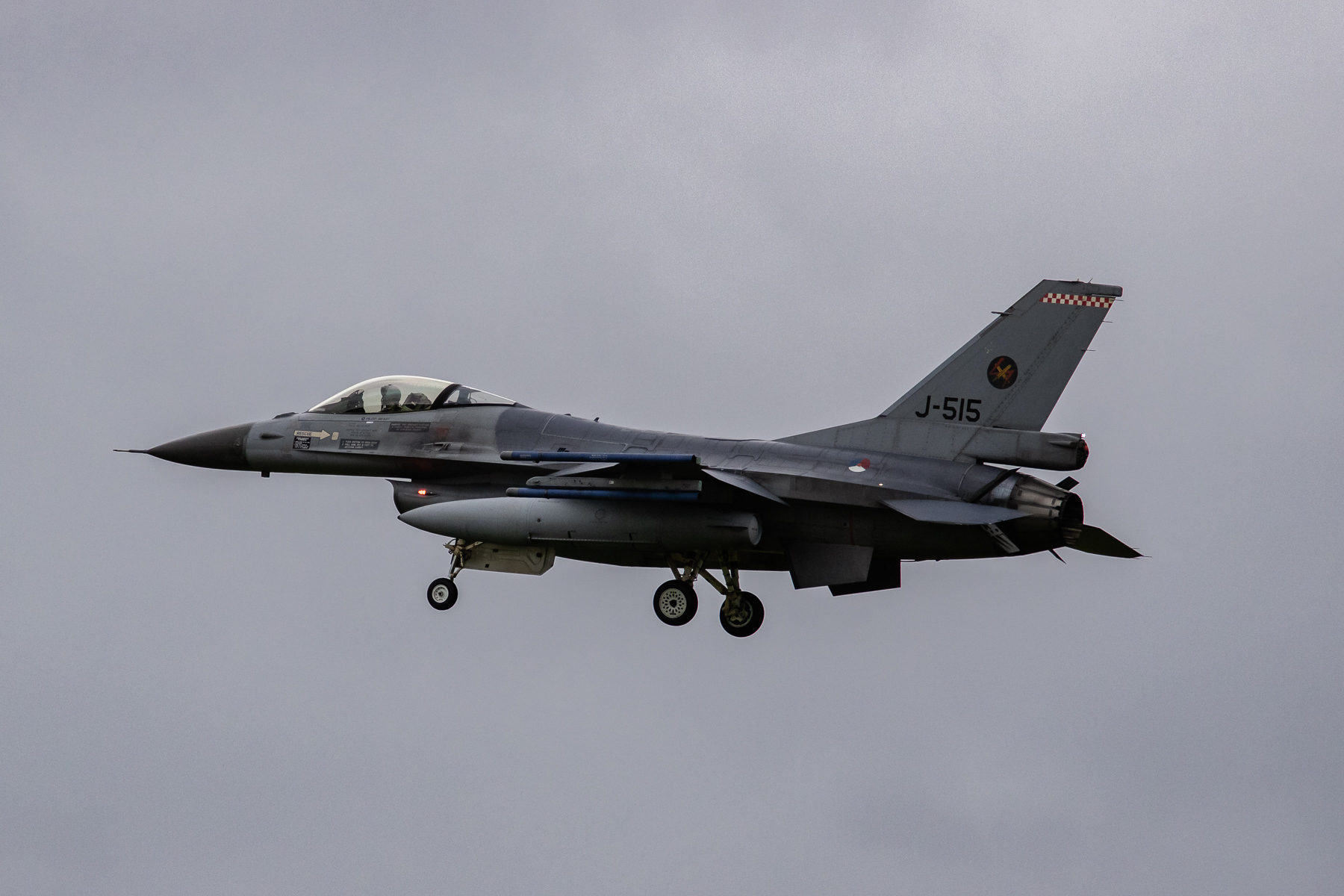
The Belgian Air Component F-16BM two-seater, the photo flight capturing the final flight in the air, at low-speed flying over Volkel Airbase before throttling back to fuel power to fly home.
